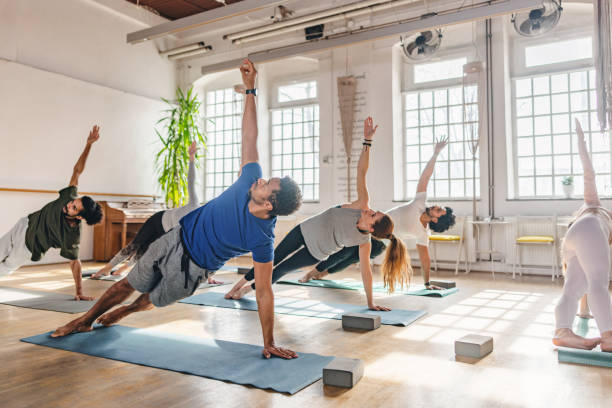Men’s Beginner Yoga Guide: No Flexibility Needed to Start Yoga
Yoga is often seen as an activity for flexible, bendy people, which can make many men hesitant to even try it. But the truth is, yoga is for everyone — no matter your flexibility level, age, or fitness background. If you’ve been thinking about starting yoga but worry about your lack of flexibility, this guide is for you. We’ll break down common misconceptions men have about yoga, share tips to get started with the right mindset, and introduce beginner-friendly poses and helpful tools that make yoga accessible without needing to be naturally flexible.
Understanding Common Misconceptions About Yoga for Men
Many men view yoga as a practice primarily focused on flexibility or femininity, leading to doubts about whether it’s suitable or beneficial for them. However, yoga offers numerous benefits beyond flexibility — including improved strength, balance, mental focus, stress relief, and injury prevention. Yoga is not about touching your toes on day one but about developing body awareness, breath control, and gradual progress.
Dispelling the myth that yoga is “too soft” or only for flexible people helps open the door for men to experience its full range of benefits. The practice can complement other physical activities like weightlifting, running, or team sports by improving mobility and recovery.
Starting Your Yoga Journey: Attitude and Approach
The best way to begin yoga as a man with little to no flexibility is to focus on patience, consistency, and openness. Accept where you are physically without judgment and remind yourself that yoga is a journey, not a competition. Setting realistic expectations can reduce frustration and help maintain motivation.
Here are some beginner tips to help you get started:
- Start slow: Begin with short sessions (10-15 minutes) and gradually increase as your comfort improves.
- Focus on breath: Learning to breathe deeply and steadily is foundational for all yoga poses.
- Listen to your body: Move mindfully and avoid pushing into pain or discomfort.
- Use props: Yoga bricks, straps, and cushions can support your practice and make poses accessible.
You Don’t Need High Flexibility to Practice Yoga
One of the biggest barriers to men trying yoga is the assumption that high flexibility is required. This is simply not true. Many beginner yoga poses are designed to improve flexibility gently and safely over time. Even if you can’t bend far now, consistent practice will increase your range of motion and reduce muscle tightness.
Starting yoga helps loosen stiff muscles, especially common areas like hamstrings, hips, and shoulders, which can be tight from sitting or intense workouts. The key is gradual progression and consistency — not forcing your body into extreme postures from day one.
Recommended Beginner Poses and Useful Tools
Beginner-Friendly Yoga Poses for Men
Here are some simple, effective yoga poses that require minimal flexibility but build strength and mobility:
- Mountain Pose (Tadasana): A standing pose focusing on posture and breath awareness.
- Downward Dog (Adho Mukha Svanasana): Stretches hamstrings and calves gently.
- Child’s Pose (Balasana): A resting posture that opens hips and relieves tension.
- Cat-Cow Stretch (Marjaryasana/Bitilasana): Mobilizes the spine and warms up the back.
- Warrior I (Virabhadrasana I): Builds leg strength and opens the hips.
- Seated Forward Fold with Strap (Paschimottanasana): Using a strap helps reach your feet without strain.
Helpful Yoga Tools for Beginners
Yoga props can significantly improve comfort and alignment:
- Yoga bricks: Provide support in standing and seated poses, helping you maintain proper form.
- Yoga strap: Extends your reach for forward bends or shoulder stretches.
- Bolster or cushion: Offers gentle support in restorative poses or seated meditation.
Using these tools helps modify poses and makes yoga approachable even if you are not flexible yet.
Conclusion
Yoga is an excellent practice for men who want to improve their physical and mental well-being without the pressure of being flexible right away. By changing your mindset, starting with beginner-friendly poses, and incorporating supportive tools, yoga can become a valuable part of your fitness routine. Remember, yoga is about progress and presence — not perfection.
Give it a try and discover how yoga can enhance your strength, balance, and relaxation regardless of your current flexibility.
